Content
All issues / Volume 17 (2023) / Issue 1 (January)
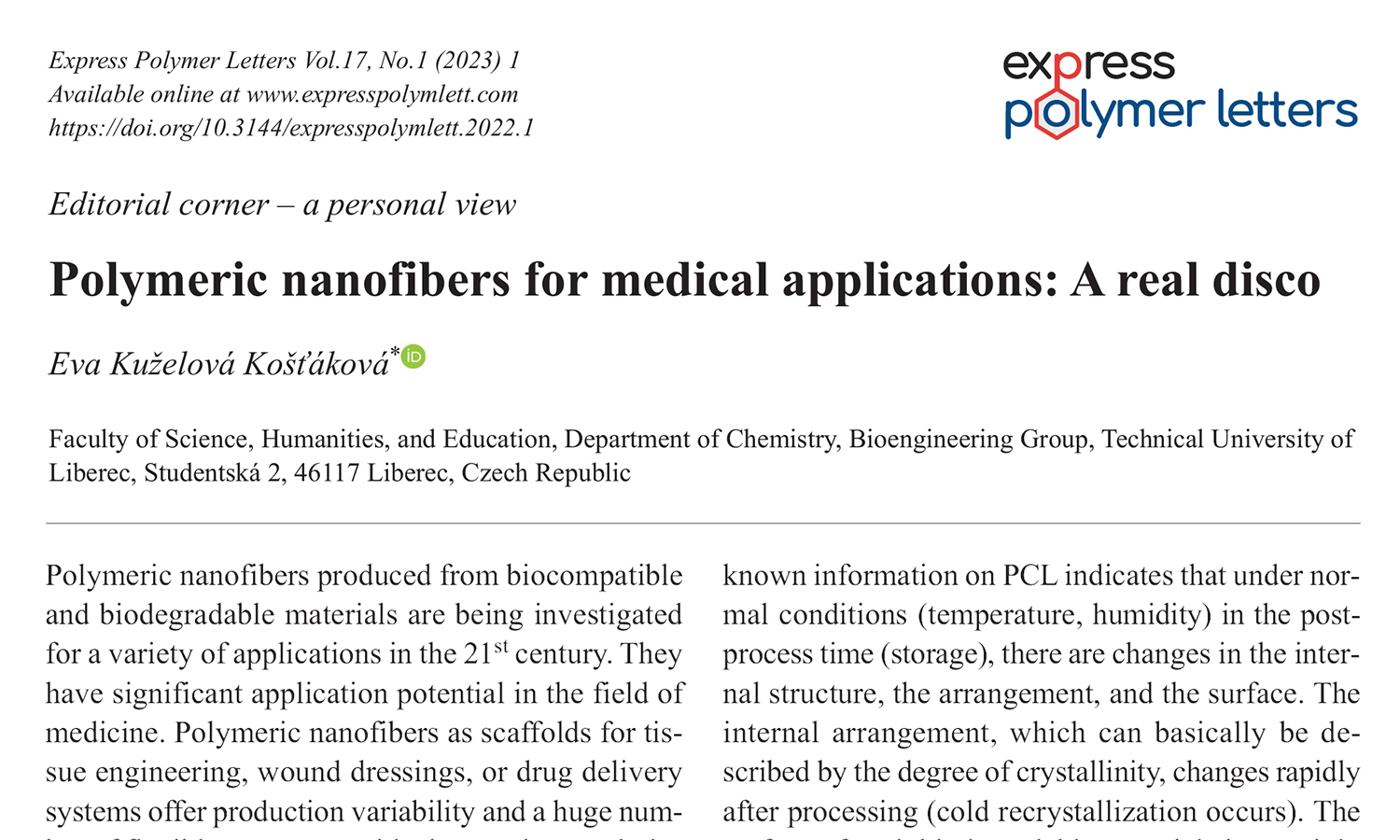
This is an editorial article. It has no abstract.
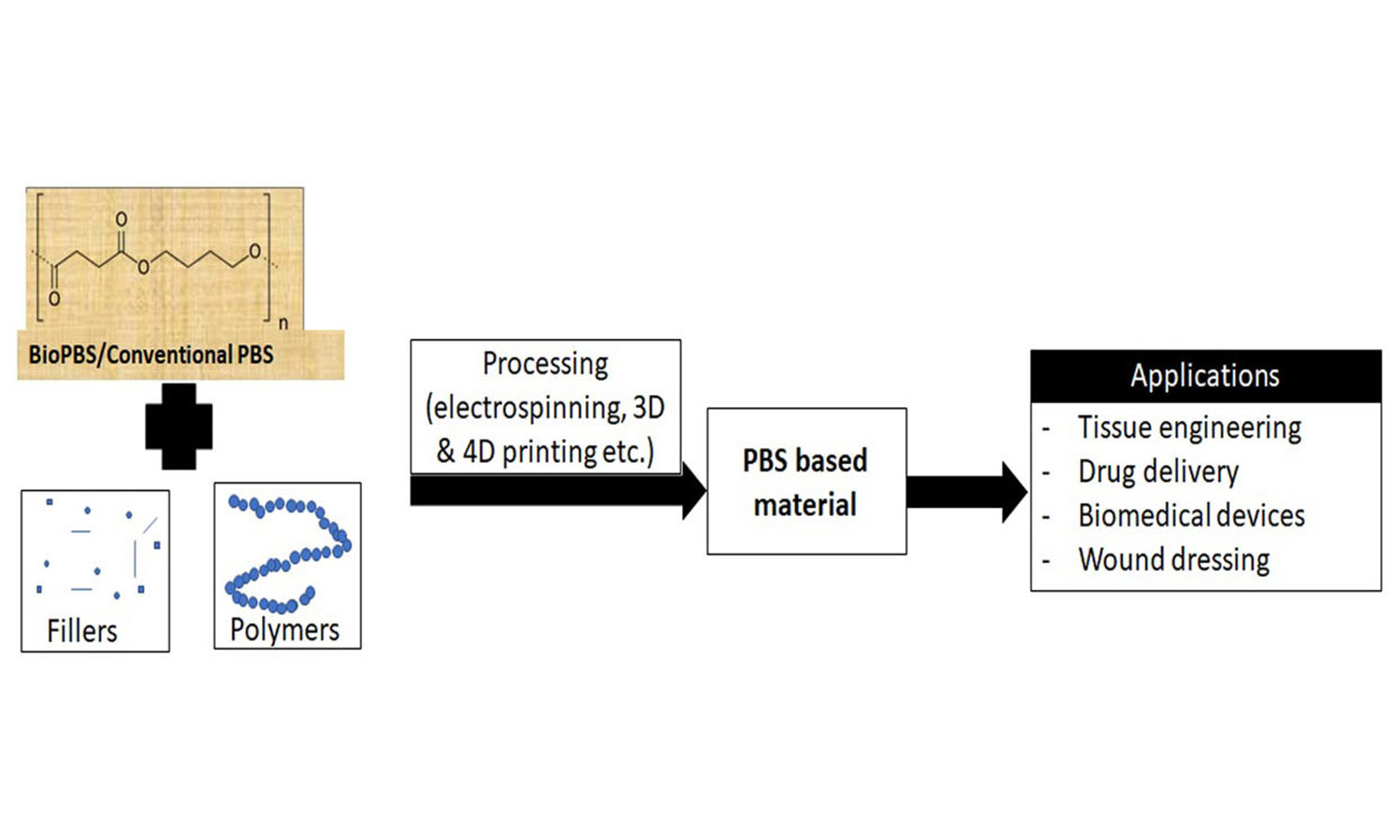
The development of biodegradable and biocompatible materials to replace non-biodegradable synthetic polymers has received significant interest in biomedical applications. Amongst all biopolymers, polybutylene succinate (PBS) possesses excellent properties, such as biocompatibility, easy processability, biodegradability, non-toxic, good mechanical and thermal properties, which makes it a suitable candidate to replace non-biodegradable synthetic polymers in biomedical applications. This review provides recent advancements, trends, and challenges for the utilization of polybutylene succinate (PBS) and PBS-based materials for biomedical applications, viz. drug delivery, tissue engineering, and biomedical devices. In addition, the design of medical devices from PBS using 3D and 4D printing is also presented. The market analysis, comparison of virgin PBS and synthetic polymer properties, as well as the end of service life, are summarized briefly. The current status, challenges, and future directions are also discussed.
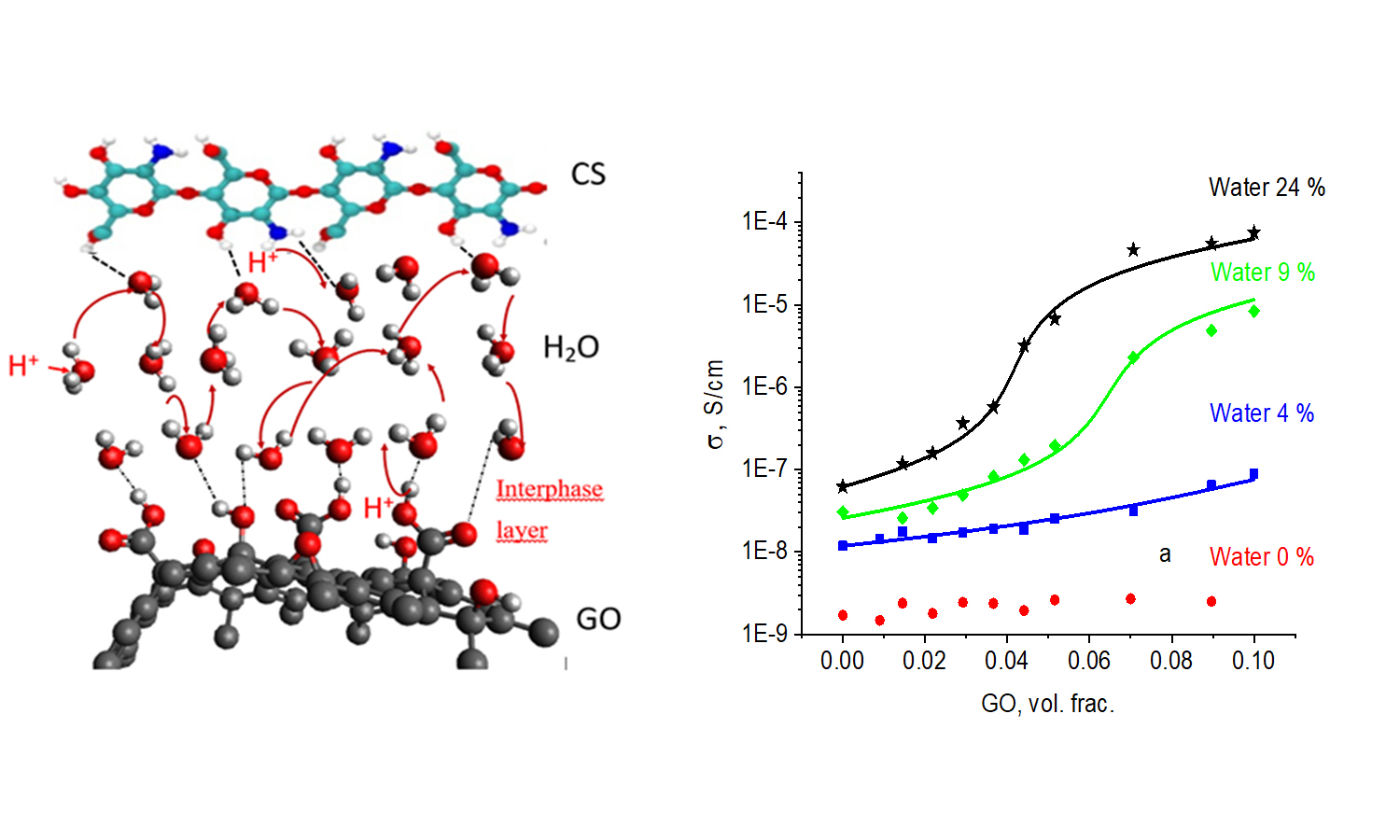
Herein, we report interphase percolation phenomena in chitosan-graphene oxide (CS-GO) nanocomposites as a function of water content. The dependencies of the DC conductivity and the static dielectric constant have been investigated in a wide range of GO concentrations (0–12 wt%) and water contents (0, 4, 9, and 24%). Fourier-transform infrared spectroscopy (FTIR), Raman spectroscopy and X-ray diffraction (XRD) measurements reveal the presence of strong interaction between the CS matrix and GO fillers. For annealed CS-GO films in a vacuum (no water content), the DC conductivity and dielectric constant do not depend upon the GO concentration. When the water content increases, a percolation phenomenon is now detected; by increasing water content, the percolation threshold shifts to a lower GO concentration. A three-phase model which includes the conductivities of CS and GO, and an interphase layer fits well DC conductivity data; this modelbased analysis suggests that upon increasing the water content, the conductivity of the interphase layer is higher than the one of both neat CS and GO. Water molecules at the interface drive a high-conductivity interfacial shell supporting a proton transfer mechanism; this mechanism is a plausible scenario for percolation in wet CS-GO nanocomposites. Our results may be of great importance in the applications of such nanocomposites in flexible electronics, biomedicine, proton exchange membranes, and sensors.
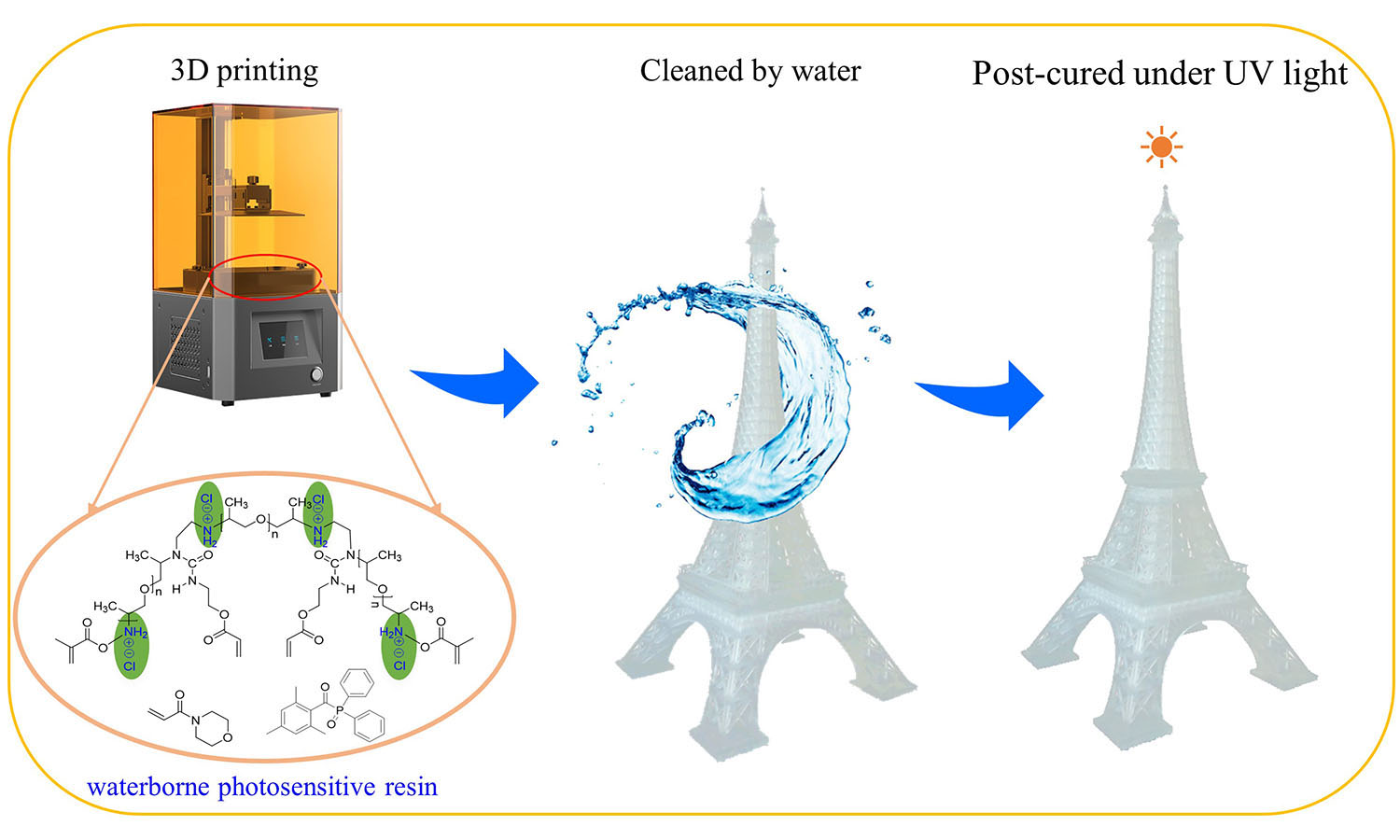
A series of novel waterborne photosensitive resins were prepared successfully with poly(propylene oxide) bis(2-aminopropyl ether), tricyclodecane dimethanol diacrylate, 2-isocyanatoethyl acrylate, and hydrochloric acid by Michael addition reaction. The results show that with the increasing double bonds content, the double bonds conversion increases from 78.7, 85.6 to 92.8% in the photopolymerization, respectively, and the gel content of the UV-cured film increases from 48.05, 69.10 to 83.28%. In addition, the glass transition temperature and tensile strength of the UV-cured film follow the same increasing trend. Moreover, the content of hydrochloride has a great influence on the hydrophilicity of the waterborne photosensitive resins. The studies indicated that as the hydrochloride content decreases, the surface water contact angle of the UV-cured film increases from 10.8, 22.9 to 51.5°, and water absorption decreases from 26.55, 16.20 to 11.06%, respectively. Moreover, the waterborne photosensitive resins exhibited a high printing accuracy together with a good effect of washing and are promising for 3D printing.
Photocuring and digital light processing 3D printing of vitrimer composed of 2-hydroxy-2-phenoxypropyl acrylate and acrylated epoxidized soybean oil
Sigita Grauzeliene, Brigita Kazlauskaite, Edvinas Skliutas, Mangirdas Malinauskas, Jolita Ostrauskaite
Vol. 17., No.1., Pages 54-68, 2023
DOI: 10.3144/expresspolymlett.2023.5
Vol. 17., No.1., Pages 54-68, 2023
DOI: 10.3144/expresspolymlett.2023.5
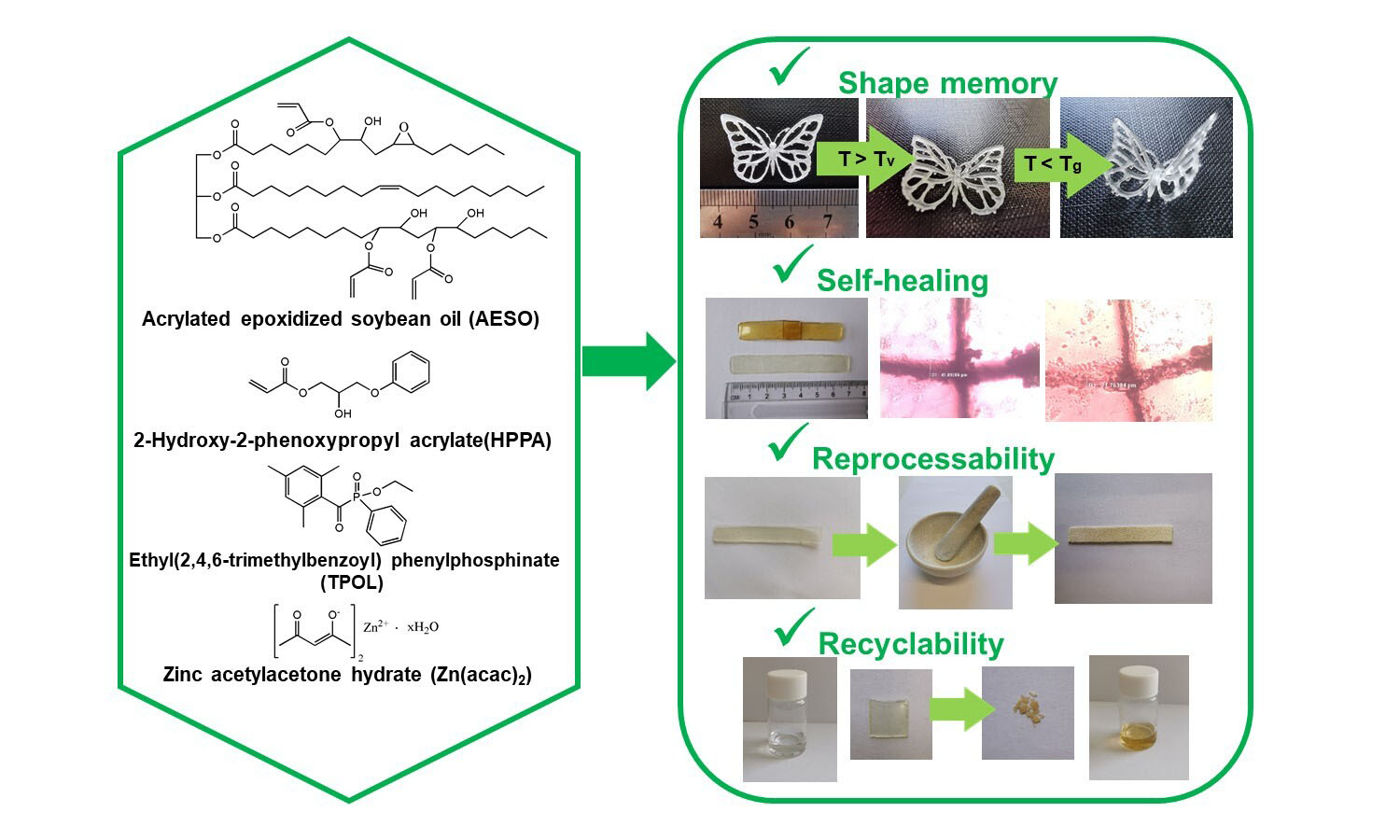
Vitrimers have gained attention as materials with recyclability, self-healing, and shape memory properties. The use of bio-based monomers for the synthesis of vitrimers is relevant because of the use of an environmentally friendly strategy. In this work, resins based on 2-hydroxy-2-phenoxypropyl acrylate and acrylated epoxidized soybean oil were designed and tested by real-time photorheometry, Fourier transform infrared spectroscopy (FT-IR), and mechanical testing to determine suitability for digital light processing 3D printing. The synthesis of vitrimer that could have good thermal properties and vitrimeric abilities, such as shape memory, self-healing, and recyclability properties, was investigated. Because of this, the vitrimer could repair cracks and defects and could have a complex design of several parts, which also contributes to recyclability and decreases costs. The rigidity and viscosity of the resins were reduced with an increasing amount of 2-hydroxy-2-phenoxypropyl acrylate-based monomer. The resin that has the highest amounts of hydroxyl and ester groups that are beneficial for transesterification reactions was chosen for vitrimer synthesis in order to show vitrimeric abilities such as self-healing, shape memory properties, reprocessability, and recyclability. The synthesized vitrimer was applied to digital light processing 3D printing and showed shape memory with a recovery ratio of 100%, self-healing and reprocessability with an efficiency of 47 and 31% and recyclability properties.
Use of modified deep eutectic solvent as an additional chemical in a flexible conductive natural rubber sensor for motion analysis
Boripat Sripornsawat, Antonia Georgopoulou, Sarttrawut Tulaphol, Anoma Thitithammawong, Jobish Johns, Yeampon Nakaramontri, Frank Clemens
Vol. 17., No.1., Pages 69-89, 2023
DOI: 10.3144/expresspolymlett.2023.6
Vol. 17., No.1., Pages 69-89, 2023
DOI: 10.3144/expresspolymlett.2023.6
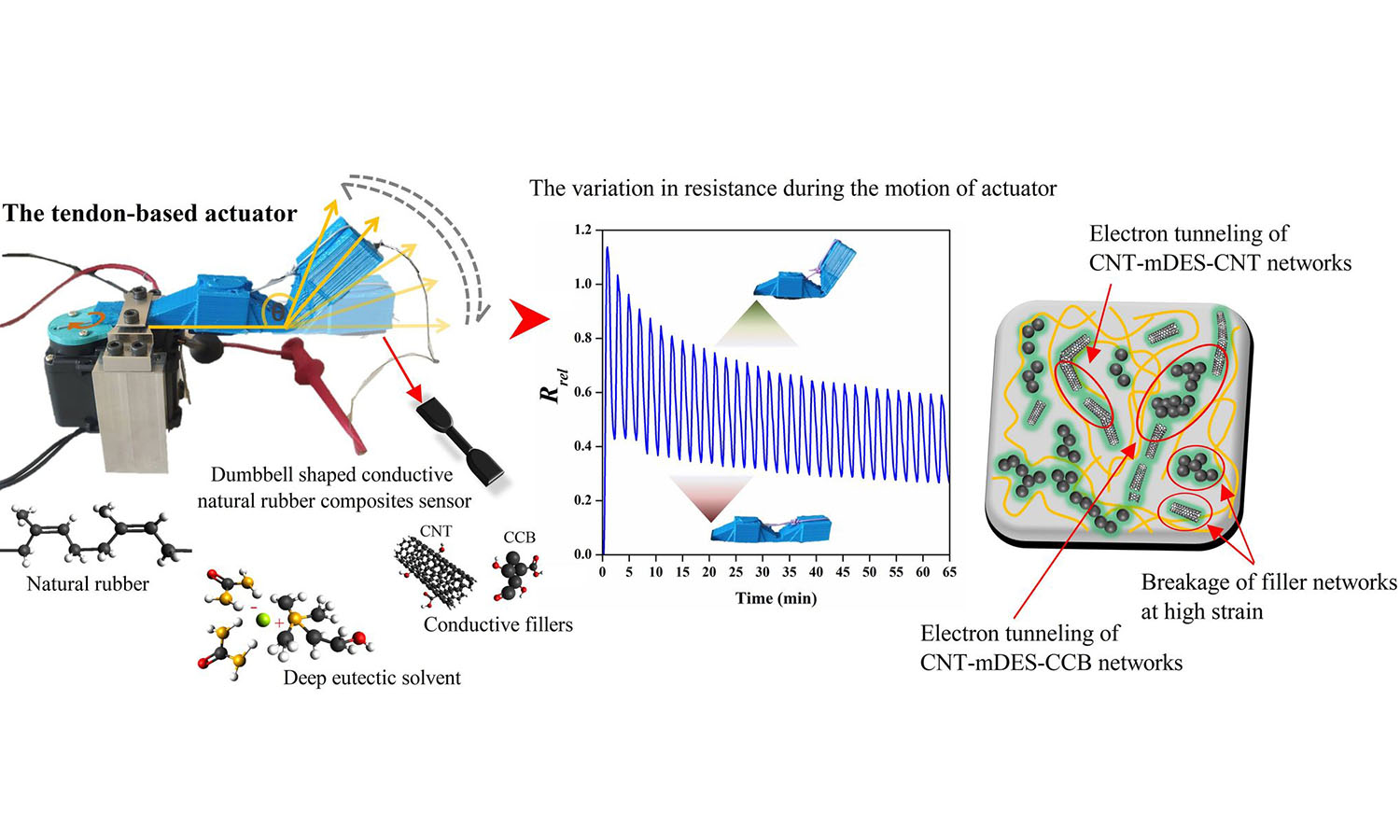
The strain sensors based on conductive natural rubber (NR) composite, filled with carbon nanotubes (CNT) and conductive carbon black (CCB), are developed due to their superior elasticity and sensitivity. To encourage electron tunneling, ionic pathway for electron moving was achieved by modified deep eutectic solvent (mDES) synthesized in-house. It was found that the incorporation of mDES impacts the curing, mechanical and electrical properties of the composites due to the interconnected CNT/CCB-mDES networks. It is demonstrated that the electrical signal sensation of conductive NR composite was improved by adding mDES, and the inconsistent sensor behavior under cyclic and quasi-static loadings was eliminated. The mDES not only improves the movement of electrons, but it also promotes the crosslinking of NR molecules without adding ZnO. In addition, for analyzing the object motion, the piezoresistive rubber sensors were tested on a soft printing structure through the cyclic motion analysis of a soft tendon-based actuator. The obtained electrical signals showed the smooth signal with noise and un-prediction electrical peaks after the combination of the mDES into the conductive NR composites. This clarifies the flexible movement of the CNT/CCB structure into the NR matrix following the specific designed objects’ motion. The present work indicates the different core novel technologies based on the use of mDES in the conductive composites matching with the acceptable electrical signal for applying as the promising motion sensor materials for soft structures.
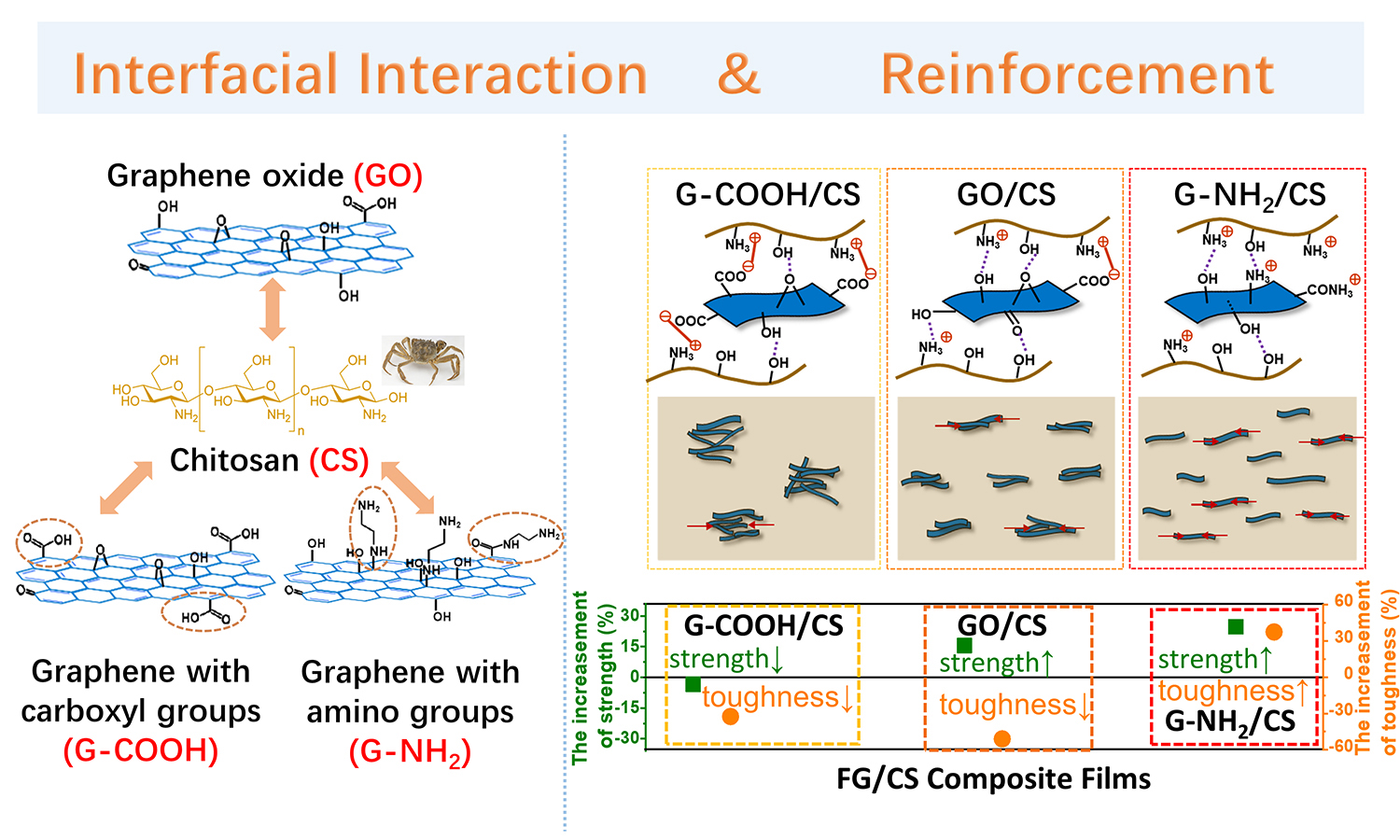
Remarkable mechanical reinforcement of chitosan films using graphene is extremely important to greatly widen the practical application of chitosan (CS) in many fields, but there still exist challenges to regulating graphene-CS interactions for both enhanced strength and toughness. In this work, we functionalized graphene oxide (GO) with carboxyl (G-COOH) and amino groups (G-NH2), and investigated the effects of interfacial interactions on the mechanical properties of graphene/CS composite films in detail. We found that the G-NH2/CS composites exhibited the most remarkable reinforcement in both tensile strength and toughness than the GO/CS and G-COOH/CS composites, even different from a theoretical prediction on graphene-CS interactions. Such remarkable reinforcement is mainly attributed to the moderate graphene-CS interaction, uniform dispersion, and high alignment of G-NH2 in CS films.
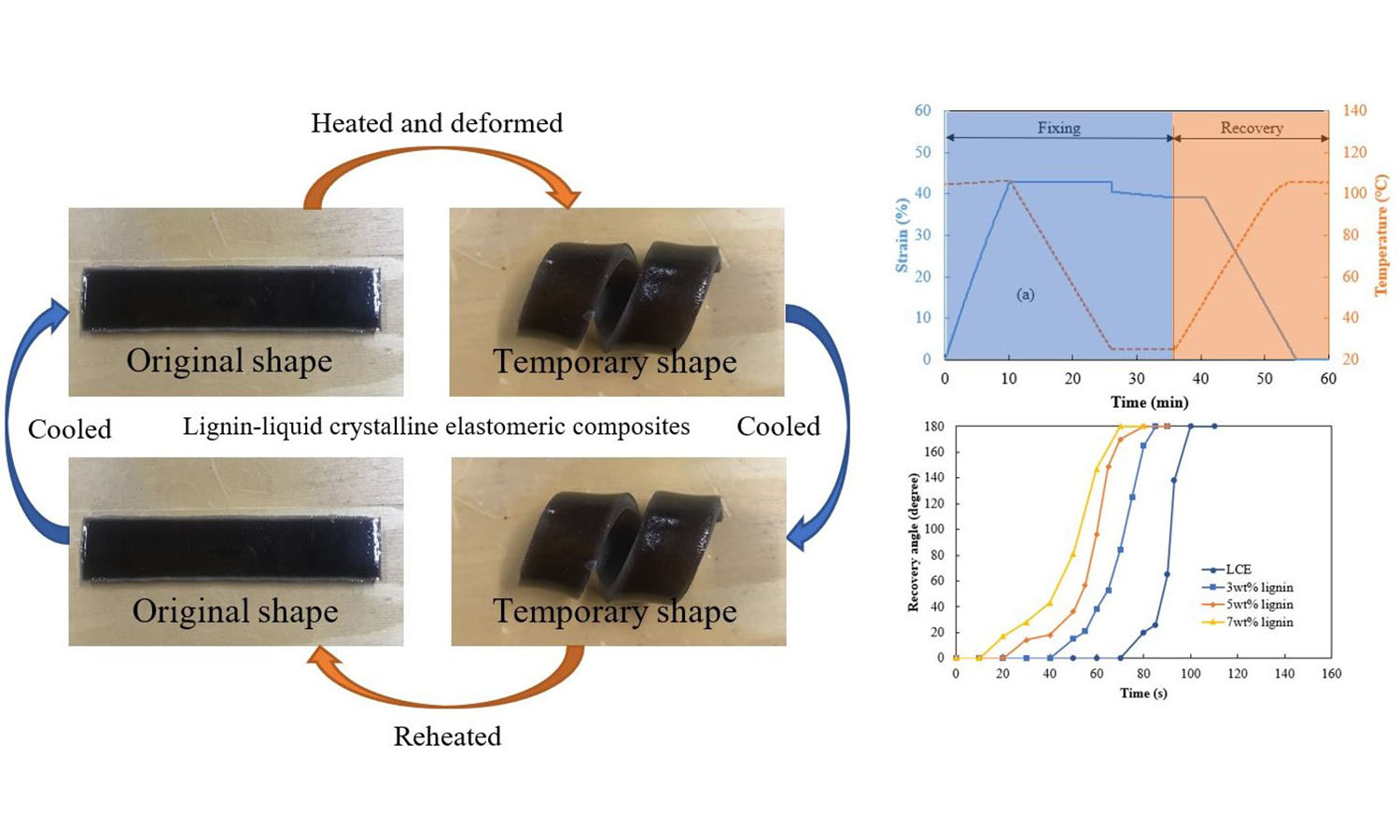
Liquid crystalline elastomers (LCEs) are stimuli-responsive materials with potential use in shape memory applications. Though particularly suited for shape memory, the LCEs however have some drawbacks such as low shape fixity (Rf) and slow recovery time. To overcome these limitations, new lignin-filled elastomeric liquid crystalline (ELC) composite materials were fabricated. The lignin used is a by-product of Kraft pulping process, which was obtained from renewable resources abundant in nature. Here, we show that the aromatic structure of lignin increases the netpoints density at the microscopic level in the ELC composite systems. Shape memory effects are enhanced by incorporating up to only 7 wt% of lignin, resulting in an Rf of 97% for the composites. Concurrently, these composites were able to maintain their shape recovery (Rr) of nearly 100%. The recovery time of the composites reduces with increasing lignin content due to the higher elastic energy released from the netpoints based on the lignin structure. The ELC composites with 7 wt% lignin could fully recover within 70 s, while the neat LCE counterpart took 100 s. Morphological features of dispersed lignin shows that even without surface modification and only a moderate quality of dispersion in LCE matrix, both shape memory and dynamic mechanical properties of the resultant composites can be significantly improved.


